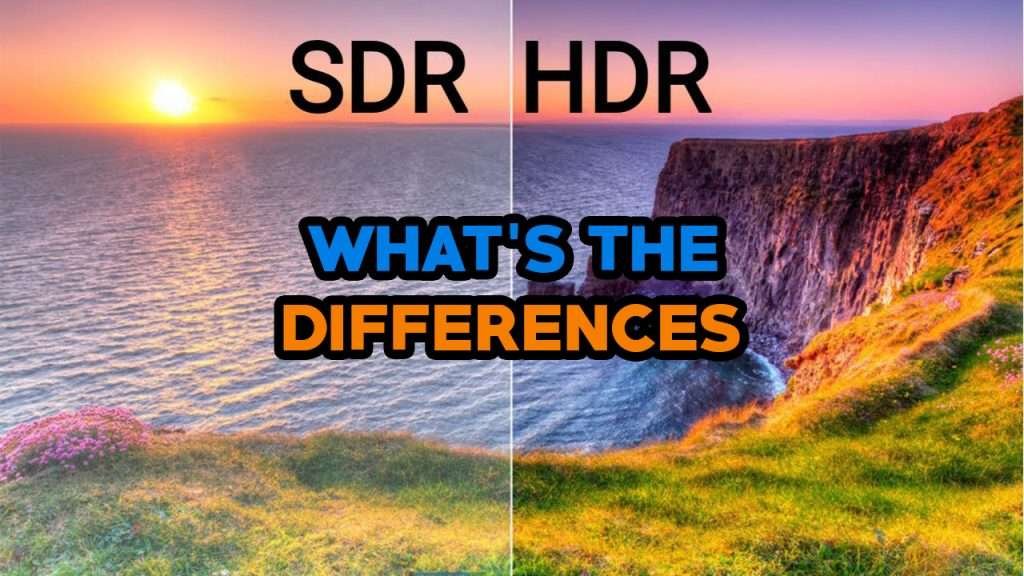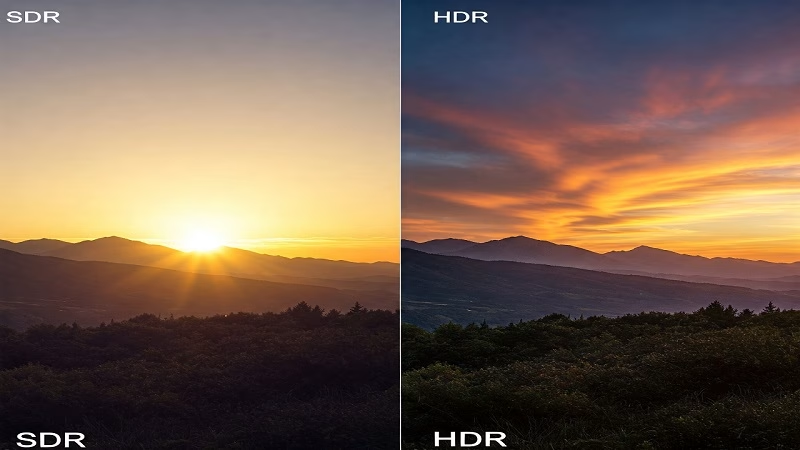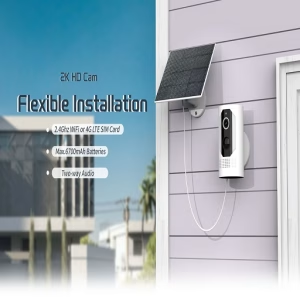HDR vs SDR: How Do They Differ? (2025 Guide)
The concepts and selection methods of HDR and SDR
With HDR, you are presented with a better-quality image, which is enhanced in color and exposure, and the picture looks better right away. When compared to SDR, it presents an unnaturally simplified and dull image. HDR overexposure loses details that can be captured with this technique. The darker spots of SDR may also lose details as a result of underexposure. Discover which one will suit you best by exploring HDR vs SDR!

HDR vs. SDR: Main Differences
Often used in displays, photography, and video, High Dynamic Range (HDR) and Standard Dynamic Range (SDR) describe a wide dynamic range. A display or image will reproduce as much luminance and color as it can. HDR and SDR differ primarily in the following ways:
Dynamic Range
HDR (High Dynamic Range):
- Brightness and Contrast: Displays and content with HDR are able to display blacks as deep as black and whites as radiant as white simultaneously. Image realism and depth are enhanced by this increased contrast ratio.
- Detail Preservation: For contrasty scenes, such as sunsets or brightly lit landscapes, HDR captures and displays more detail both in the shadows and highlights.
SDR (Standard Dynamic Range):
- Limited Brightness and Contrast: The brightness and contrast levels of SDR content and displays are narrower. Darkest and brightest areas of an image may lose detail due to this.
- Less Detail in Extremes: When scenes have high contrast, SDR may show both blown-out highlights and crushed shadows, which can result in loss of detail.

Color Range
HDR:
- Wider Color Gamut: Colors are supported by HDR in a broader range, using space such as DCI-P3 or Rec 2020. Colors are more accurate and vibrant as a result.
- 10-bit or Higher Color Depth: Over a billion colors can be produced with HDR content, which generally uses a 10-bit color depth or higher. Gradients will be smoother and banding will be reduced.
SDR:
- Narrower Color Gamut: HDR uses a wider color space than SDR, which adheres to Rec 709. There may be a lack of richness and accuracy in colors.
- 8-bit Color Depth: There are approximately 16.7 million colors supported by SDR content, which is encoded in an 8-bit color depth. Consequently, color banding may occur and color transitions may be less smooth.
Content Creation and Compatibility
HDR:
- Advanced Content Creation: A higher range of luminance and color is required to create HDR content with advanced cameras and editing software.
- Compatibility Requirements: It is essential that both the display device and the source of HDR content support HDR in order to view HDR content properly. In addition to HDR10 and Dolby Vision, HLG is also a common HDR format.
SDR:
- Widespread Compatibility: Because SDR content has been the standard for many years, it is compatible with many devices.
- Easier Creation: It is easier and more cost-effective to create SDR content than HDR.
Viewing Experience
HDR:
- Enhanced Realism: In addition to providing greater depth, detail, and color accuracy, HDR offers a more immersive and lifelike viewing experience.
- Impact on Different Displays: In environments with controlled ambient light, HDR’s benefits are more noticeable on larger screens.
SDR:
- Consistent Experience: In various lighting conditions and with different devices, SDR offers a consistent and reliable viewing experience.
- Less Immersive: Despite delivering good quality, SDR does not offer the same level of immersion as HDR when it comes to dynamic range and color depth.
Industry Adoption and Future Trends
HDR:
- Growing Adoption: Streaming services, gaming, and cinematography are all incorporating HDR into their products. The HDR content on Netflix, Amazon Prime Video, and YouTube is available on these platforms.
- Future-Proofing: The industry continues to move towards higher quality standards, so investing in HDR-capable devices and content makes sense.
SDR:
- Established Standard: Despite the rise of HDR, SDR remains prevalent, particularly in broadcast television and older content.
- Gradual Transition: Its extensive content library and compatibility will keep SDR relevant for years to come, even as HDR gains traction.
SDR vs. HDR: Which is better?
The type of content, viewing environment, and your equipment can all influence whether High Dynamic Range (HDR) or Standard Dynamic Range (SDR) is best for you. This guide explains when HDR and SDR should be used:
When to Use HDR
High-Quality Content Production
- Professional Photography and Videography: In order to capture a wide range of luminance and colors, HDR is an ideal solution for professional photographers and videographers. It is perfect for landscapes, portraits, and dynamic scenes due to its ability to show both shadows and highlights in intricate detail.
- Cinematic Experience: It can be more immersive and lifelike if HDR is used in films or high-end TV shows.
Home Entertainment Systems
- 4K UHD TVs and Projectors: Ultra High Definition (UHD) TV sets and projectors that support HDR10, Dolby Vision, or HLG are the best for utilizing HDR. HDR’s extended color and brightness ranges can be fully utilized on these devices.
- Streaming Services: It is possible to stream HDR content on a variety of streaming services, such as Netflix, Amazon Prime Video, and Disney+. The image quality of these movies and shows will be improved if you watch them in HDR.
Gaming
- Next-Gen Consoles and Gaming PCs: Adding HDR to gaming graphics enhances the vibrant colors and deep contrasts, as well as creating a more immersive experience. A HDR-capable TV or monitor and a PlayStation 5 or Xbox Series X console are required to use HDR.
When to Use SDR
Standard Broadcasting and Older Content
- Traditional TV: Video content produced in SDR is most often found on broadcast television channels and older video content. Ensure compatibility and proper display of this content by using SDR settings.
- DVDs and Early Digital Formats: DVDs and early digital formats usually feature SDR content, so SDR displays ensure accurate playback.
Devices Without HDR Support
- Older TVs and Monitors: To make sure your content is displayed correctly, use SDR if your display does not support HDR.
- Budget-Friendly Options: It provides a consistent and reliable viewing experience without requiring HDR technology, which makes it suitable for more affordable setups that do not include HDR technology.
Daytime Viewing and Bright Environments
- High Ambient Light: The benefits of HDR may be less apparent in bright environments or during the day. With SDR, you don’t need to control the lighting conditions for an enjoyable viewing experience.
Final Verdict
A specific use case, the equipment you have, and the environment where you will be viewing or producing content should all be taken into account when choosing HDR or SDR. Streaming services, gaming consoles, and 4k TVs offer the best HDR experience, especially in controlled lighting environments. Among the main benefits of SDR are the ability to broadcast, to use older content, to keep setups within budget, and to handle situations that require flexibility and ease of use. You can optimize your viewing and content creation experiences by understanding the strengths and weaknesses of each format.
See here, your problem has been solved. For more professional knowledge, please visit chenaniot’s blog.




